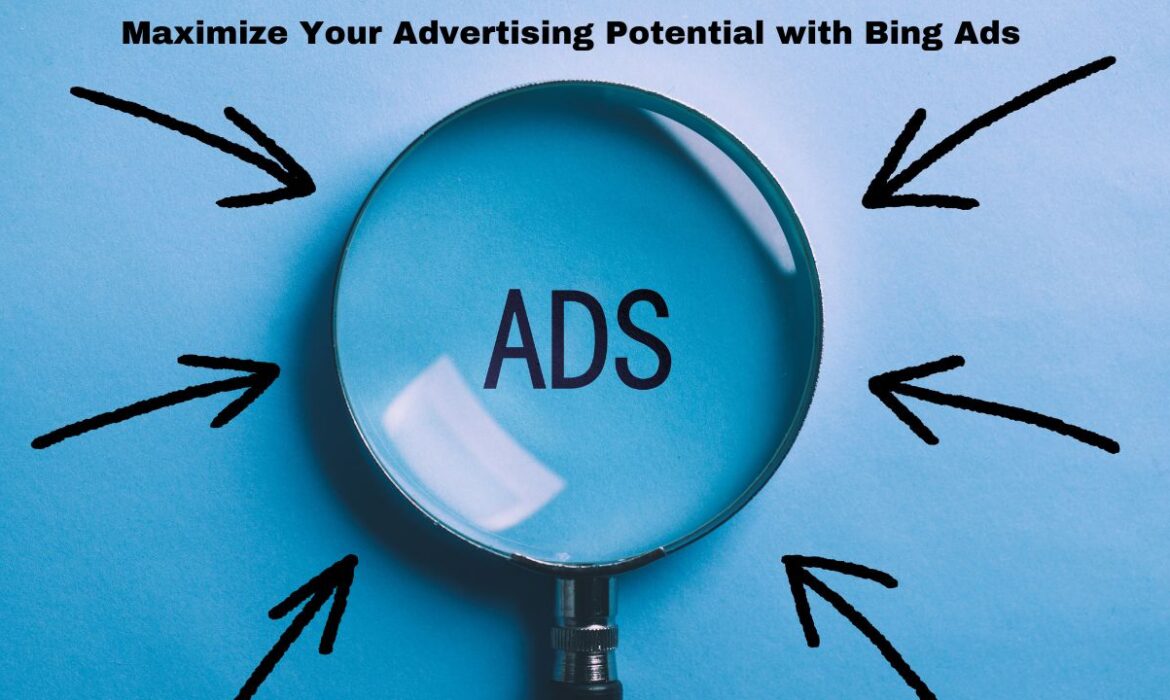
Introduction to Bing Ads
As a professional in the field of search engine marketing (SEM), I’m here to talk to you about a powerful tool that could revolutionize your digital advertising efforts: Bing Ads.
Overview of Bing Ads
Bing Ads is Microsoft’s platform for pay-per-click (PPC) advertising, a form of paid search marketing. Unlike traditional advertising methods, PPC advertising allows businesses to pay only when their ad is clicked, making it a cost-effective strategy for those looking to maximize their advertising ROI.
Bing Ads operates on the Bing search engine, displaying ads to users based on their search queries. But what sets Bing Ads apart is its ability to create a more customized online experience tailored for users, according to Microsoft Advertising. This personalization extends to the ads that users see, helping businesses reach their target audience more effectively.
Benefits of Bing Ads
One of the key benefits of Bing Ads lies in its advanced targeting capabilities. As per Microsoft Advertising Help, audience targeting in Bing Ads allows advertisers to set up specific criteria for who should see their ads, ensuring they are shown only to customers who are more likely to make a purchase. This includes sophisticated targeting options, such as demographics, locations, devices, and time of day (Disruptive Advertising).
In addition to precise targeting, Bing Ads also offers a variety of ad formats and advanced analytics, giving advertisers the tools they need to create compelling, data-driven ad campaigns. Plus, Bing Ads provides the option to import campaigns from Google Ads, making it easier for businesses to expand their SEM efforts beyond a single platform.
To summarize, Bing Ads provides a powerful platform for SEM that can help businesses reach their target audience more effectively, create engaging ad campaigns, and maximize their advertising ROI. In the following sections, we’ll delve deeper into the capabilities of Bing Ads and how it compares to other platforms like Google Ads. Stay tuned.
Targeting Capabilities
One of the standout benefits of Bing Ads is its sophisticated targeting options that provide advertisers with the ability to reach specific demographics and locations. Let’s delve deeper into the demographic targeting and geographic and device targeting capabilities offered by Bing Ads.
Demographic Targeting
Bing Ads offers a variety of demographic targeting options, allowing advertisers to reach specific groups of people based on factors such as their age, gender, and interests. This feature gives businesses more control over who sees their ads, thereby maximizing the potential return on their advertising investment (Source).
Demographic targeting can be incredibly useful for businesses whose products or services cater to a specific demographic. For example, a company selling maternity clothes can use Bing Ads’ demographic targeting to ensure their ads are shown primarily to women in a certain age range.
Geographic and Device Targeting
In addition to demographic targeting, Bing Ads also offers geographic and device targeting options.
Geographic targeting allows advertisers to reach customers in specific locations. Whether you’re a small business owner looking to target customers in your local area (local search marketing), or a multinational corporation aiming to reach customers across different regions, Bing Ads’ geographic targeting can be an effective way to reach your target audience (HawkSEM).
Device targeting, on the other hand, allows advertisers to target customers based on the device they’re using, be it a desktop, tablet, or mobile device. This is particularly useful in today’s digital age, where consumers use a variety of devices to browse the internet and make purchases.
The combination of demographic, geographic, and device targeting capabilities makes Bing Ads a powerful tool in any search engine marketing strategy. By taking advantage of these targeting options, you can ensure your ads are shown to the right people, at the right time, and in the right place.
Comparative Analysis
In the world of search engine marketing, advertisers often find themselves comparing Bing Ads and Google Ads. Each platform has its own strengths and weaknesses, and understanding these differences can help you decide where to allocate your advertising budget.
Bing Ads vs Google Ads
Bing Ads often outperforms Google Ads in terms of the average click-through rate, making it a potentially more effective platform for advertisers. In addition, Bing Ads tends to have lower competition which can result in lower advertising costs and higher ROI.
| Metrics | Bing Ads | Google Ads |
|---|---|---|
| Average Click-Through Rate (CTR) | 5.17% | 3.17% |
| Average Cost Per Click (CPC) | $1.54 | $2.69 |
| Competition level | Lower | Higher |
Figures courtesy Instapage
Moreover, Bing Ads has a lower minimum bid requirement compared to Google Ads, which can be beneficial for advertisers with smaller budgets. This competitive pricing model allows businesses to set their own budget and pay only for clicks or impressions.
Cost Efficiency and ROI
When it comes to cost efficiency, Bing Ads often shines. With lower cost-per-click rates compared to Google Ads, Bing Ads provides advertisers with potentially better cost efficiency and ROI (Disruptive Advertising).
The lower competition level in Bing Ads can also lead to lower advertising costs and higher ROI (Source).
Overall, while Google Ads is widely recognized in the world of PPC advertising, Bing Ads offers competitive metrics that shouldn’t be overlooked. Depending on your target audience, budget, and specific marketing goals, Bing Ads could potentially offer a more cost-effective solution.
Remember, a successful SEM strategy involves a mix of platforms. For more information, visit our articles on local search marketing, paid search marketing, and SEM for small businesses.
Bing Ads Features
Bing Ads is not just another advertising platform; it is equipped with a variety of features that can help businesses achieve their advertising goals. In this section, we’ll explore two key features: the range of ad formats and the advanced analytics offered by Bing Ads.
Ad Formats
One of the key features of Bing Ads is the variety of ad formats it offers. This allows you, as an advertiser, to customize your campaigns to fit your specific goals. Bing Ads offers a range of formats including text ads, shopping ads, and dynamic search ads.
-
Text Ads: These are simple but effective. They consist of a headline, a display URL, and a description. These ads are perfect for conveying your message in a concise manner, making them ideal for search engine marketing campaigns.
-
Shopping Ads: If you’re selling products online, shopping ads can be a game-changer. They display product images, price, and business name right in the search results, catching potential customers’ attention.
-
Dynamic Search Ads: These ads are ideal for advertisers with a well-developed website or a large inventory. Bing uses your website content to target your ads and keep them relevant.
By leveraging these different ad formats, you can create a robust and effective advertising strategy on Bing.
Advanced Analytics
In addition to diverse ad formats, Bing Ads also offers advanced analytics. This feature provides you with detailed insights into the performance of your ads. You can track metrics like click-through rates, impressions, conversions, and more. This can help you understand what’s working and what needs improvement in your campaigns.
The combination of diverse ad formats and advanced analytics makes Bing Ads a powerful tool in your SEM strategies. Whether you’re new to PPC advertising or an experienced marketer looking for alternatives to Google Ads, Bing Ads has the features and flexibility to help you achieve your marketing goals.
Practical Applications of Bing Ads
Bing Ads have a broad array of uses across various industries. Here, we will delve into two specific applications: using Bing Ads for promoting online courses and for driving attendance to conferences.
Bing Ads for Online Courses
In the digital age, online courses have become an important avenue for learning and skill development. Bing Ads can be a powerful tool for course creators and coaches seeking to grow their businesses. By running ad campaigns on Bing Ads, they can reach a wider audience and boost student enrollment while focusing on strategic planning and program management (Think Orion).
Additionally, Bing Ads can engage prospective students by presenting them with relevant course advertisements where they are already browsing. This can lead to increased course sign-ups and participation, thus contributing to the growth of the business.
In fact, Bing Ads have been found to be particularly effective in certain industries such as home improvement, healthcare, legal services, and travel and tourism (Source).
Bing Ads for Conferences
Conferences are a key networking and knowledge sharing platform across various industries. Bing Ads can play a significant role in boosting conference attendance. By amplifying content related to the conference, Bing Ads can assist in speeding up ticket acquisition and partnership building (Think Orion).
The precise targeting capabilities of Bing Ads can ensure that the advertisements reach the right audience, which could be potential attendees or sponsors for the conference. This makes Bing Ads a highly effective tool for conference marketing and promotion.
In conclusion, whether you’re promoting online courses or organizing conferences, Bing Ads can provide a powerful boost to your marketing efforts. As with any Search Engine Marketing strategy, the key is to understand your target audience and tailor your Bing Ads campaign to meet their needs and interests. For more SEM strategies and best practices, check out our guide on SEM best practices.
Getting Started with Bing Ads
Once you’ve decided to explore Bing Ads as part of your search engine marketing strategy, you’ll need to know how to set up your campaigns and, if applicable, import them from your Google Ads account.
Setting Up Bing Ads
Setting up Bing Ads is a straightforward process. First, you’ll need to create a Bing Ads account. You will be guided through the process of setting up your first ad campaign, including choosing your ad format, setting your budget, and selecting your targeting options.
Bing Ads offers a variety of ad formats, including text ads, shopping ads, and audience ads, which allows you to customize your campaigns to fit your goals (HawkSEM). You also have the option of targeting your ads based on geographic location, demographics, and device type.
Once your campaign is set up, you can use Bing Ads’ detailed analytics and reporting tools to track the performance of your ads and make data-driven decisions.
Importing Campaigns from Google Ads
If you’re already using Google Ads, you can easily import your campaigns into Bing Ads. This feature, provided by Bing Ads, makes it easy for advertisers to expand their reach across both platforms.
To import your campaigns, you’ll need to log into your Bing Ads account and select the ‘Import from Google Ads’ option. You’ll then be prompted to sign in to your Google Ads account, select the campaigns you want to import, and customize your import options.
Remember that while Bing Ads and Google Ads are similar, they do have some differences. For example, Bing Ads generally has a lower cost per click compared to Google Ads (Source), which can make it a more cost-effective option for advertisers.
Whether you’re setting up Bing Ads for the first time or importing your campaigns from Google Ads, remember to continuously monitor and adjust your campaigns based on your performance data. This will help you maximize your return on investment and achieve your advertising goals. For more tips on search engine marketing best practices, check out our article on SEM best practices.










